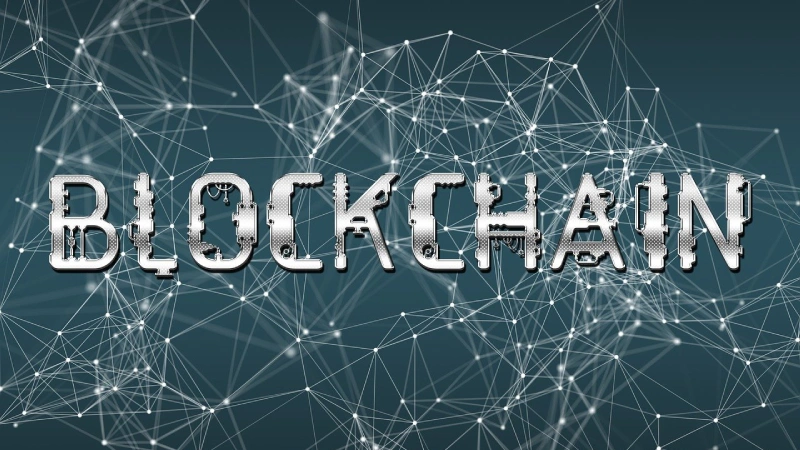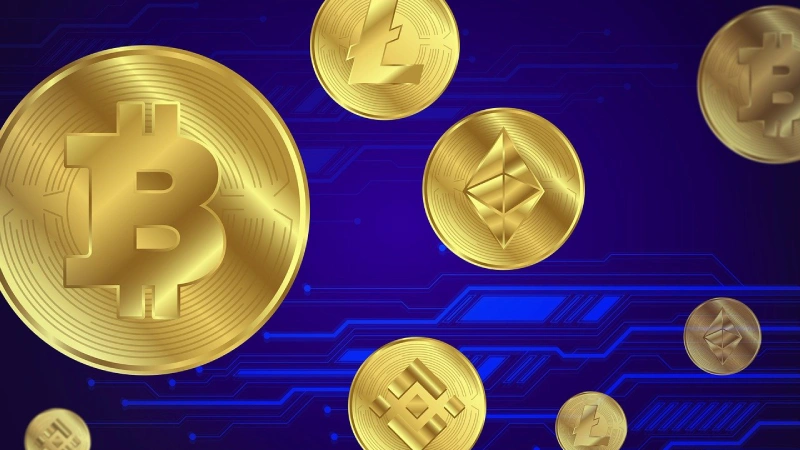Highlights.
- In April 2025, US digital asset firms made significant strides in tokenization, particularly with BlackRock and Franklin Templeton.
- Institutional adoption grew as Apollo and Figure tokenized private credit, while retail platforms like Coinbase and Robinhood improved wallet usability and education.
- These developments mark a shift from experimentation to mainstream implementation in blockchain technology across financial sectors.
April 2025 has proven to be a pivotal month for the U.S. blockchain industry. As the sector matures, American digital asset firms are transitioning from experimentation to robust commercial deployments. Key emerging themes include a surge in tokenized real-world assets (RWAs), the development of sophisticated Web3 infrastructure, and a range of new consumer-facing blockchain products. These advancements mark a significant shift from speculative utility to practical application, driven by both institutional and retail demand for decentralized financial tools.

For general tech enthusiasts, this means we are entering an era where the blockchain is not just about crypto speculation or NFTs; it is about how traditional assets, such as real estate, stocks, and even intellectual property, are being reimagined using decentralized rails. From faster settlement systems to transparent ownership records, blockchain is becoming a foundational technology in multiple industries.
Tokenization of Real-World Assets.
The US Digital Asset Tokenization is the process of issuing blockchain-based tokens that represent ownership of real-world assets and has long been hailed as the “killer app” for blockchain. This April, several U.S. firms made significant strides in turning that vision into reality. These moves come amid rising institutional interest and demand for more efficient ways to trade, settle, and manage traditional asset classes.
Table of Contents
BlackRock’s Digital Liquidity Fund Launch.
The most notable development came from BlackRock, the world’s largest asset manager, which launched the BlackRock USD Institutional Digital Liquidity Fund (BUILD). Built on Ethereum and utilizing Securitize as its transfer agent, the fund allows institutions to gain exposure to the US Digital Asset Treasuries in a tokenized format. What sets BUIDL apart is its seamless integration with DeFi (decentralized finance) protocols, giving investors near-instant liquidity and access to collateralized lending through blockchain-native systems like Aave and Compound.
This move signals growing confidence from traditional finance (TradFi) giants in blockchain’s long-term potential as a foundational layer of the global financial system. By tokenizing U.S. Treasuries on-chain, BlackRock not only enhances liquidity and transparency but also streamlines operational complexity typically associated with fixed-income investments. For institutional investors, BUIDL offers faster settlement, 24/7 access to capital, real-time reporting, and programmable asset functionality —capabilities that are nearly impossible to achieve through legacy infrastructure.

For DeFi protocols, BUIDL introduces highly liquid and regulated collateral into decentralized ecosystems, enabling safer lending, borrowing, and yield strategies. This symbiotic interaction creates a virtuous loop, where traditional and decentralized finance reinforce each other’s growth and resilience.
Franklin Templeton Expands Tokenized Money Market Offerings.
Franklin Templeton expanded its OnChain U.S. Government Money Fund, which uses Stellar and Polygon blockchains to manage tokenized assets. The fund reached over $400 million in assets under management in April, making it one of the most successful tokenized money market funds globally. The fund also became the first to offer tokenized shares that can interact with multiple wallet providers, including MetaMask and Coinbase Wallet, enabling broader investor accessibility.
Franklin Templeton also announced a new API suite for developers, enabling seamless integration of tokenized fund shares into fintech apps, robo-advisors, and even DAO treasuries. The API suite allows third-party platforms to integrate tokenized money market fund functionality directly into their interfaces, providing real-time investment access, automated rebalancing, and on-chain reporting.

This move reflects a broader industry shift toward making tokenized assets programmable and interoperable, cornerstones of a future where financial products can be customized, automated, and audited with far greater flexibility and transparency than traditional systems allow.
Enterprise Blockchain: Figure and Apollo Global.
April also witnessed considerable progress in using blockchain infrastructure to modernize private markets. Unlike public equities, private capital markets often suffer from a lack of transparency, slow settlement processes, and costly manual administration. Blockchain offers a compelling solution by automating the issuance, transfer, and compliance processes.
Figure Technologies, known for its Provenance blockchain, announced a strategic collaboration with Apollo Global Management to tokenize private credit deals. Using smart contracts, the platform automates loan origination, investor onboarding, and interest payments. Apollo highlighted that tokenization could reduce administrative costs by up to 30% while also offering real-time performance monitoring to investors.
Additionally, Figure rolled out a secondary trading feature, enabling accredited investors to trade private credit tokens on a blockchain-based exchange. This improves liquidity in a traditionally illiquid market and opens up new avenues for retail and institutional investors to participate in alternative credit strategies.
In another update, Figure reported over $1.2 billion in tokenized assets processed on Provenance in Q1 2025 alone, indicating growing institutional trust in blockchain infrastructure.
Retail-Facing Products and Wallet Innovations.

Beyond institutions, U.S. crypto companies are racing to develop tools that make blockchain usable for everyday consumers. From improved wallets to enhanced UX in dApps, the goal is to make blockchain technology “disappear” into the background, making it seamless, safe, and intuitive.
Coinbase Wallet 3.0: A Web2-friendly Web3 Gateway.
Coinbase’s version 3.0 update for its wallet app introduced a plethora of new features that bridge the gap between Web2 and Web3. These include biometric logins, in-app identity verification (KYC), and support for account abstraction, allowing users to interact with apps without manually signing every transaction. The update also brings enhanced security protocols, customizable gas fee settings, and a streamlined interface that resembles traditional banking apps, making it easier for new users to navigate Web3 tools.
By simplifying the wallet experience while preserving the benefits of decentralization, Coinbase aims to become the entry point for millions of mainstream users looking to explore blockchain-powered services.
The company also introduced an AI-based assistant within the wallet that helps users navigate the DeFi protocols, optimize yield strategies, and identify phishing attempts. By leveraging the combined use of AI and blockchain, Coinbase is heading towards a smarter, safer wallet experience. The update also saw the partnership with Base (its own Layer-2 network), enabling faster and cheaper transactions for Coinbase users.
Robinhood Crypto Wallet: Support for Ethereum and Layer-2s.

Robinhood Wallet is an application that serves as a self-custody wallet, providing a gateway for many users to access Web3, where they can store and manage their preferred cryptocurrencies. Robinhood’s crypto wallet now allows direct transfers and dApp connectivity across Ethereum and its major scaling solutions, including Arbitrum and Optimism.
The app also supports staking for Ethereum, and its latest update features real-time gas fee estimation and alerts for significant DeFi events, such as liquidation thresholds or governance proposals.
The company plans to introduce a “Learn & Earn” module to help new users understand DeFi, token swaps, and blockchain security through interactive lessons and a reward-based learning approach. By earning small amounts of cryptocurrencies for completing educational tasks, users gain both practical experience and tangible incentives.
This reflects a larger industry trend: onboarding new users with education-first interfaces that combine gamification and real-world value, thereby fostering trust, engagement, and blockchain literacy from the outset.
Infrastructure Upgrades and Interoperability Protocols.
To support this wave of innovation, the technical foundation of blockchain is also evolving rapidly. April was marked by key breakthroughs in how different blockchains scale their operations to meet the demands of both enterprises and consumers.
Avalanche Subnets and Circle’s USDC Expansion.
Ava Labs expanded its Subnet infrastructure, offering organizations the ability to build high-performance, permissioned blockchains tailored to their needs. These Subnets provide granular control over validators, fees, and throughput, making them ideal for sectors like gaming, real estate, and regulated finance.

Unlike general-purpose Layer 1 networks, Subnets allow entities to configure core blockchain parameters, including validator composition, transaction fees, consensus mechanisms, and throughput limits, resulting in a more efficient and specialized ecosystem.
Circle’s rollout of USDC to these subnets enables builders to utilize a stable, dollar-denominated value in their apps with minimal complexity. By integrating USDC natively within Avalanche’s Subnet ecosystem, developers can ensure users transact with a highly liquid, transparent, and regulated stablecoin.
This especially empowers use cases such as cross-border remittances, automated yield farming, digital commerce, and enterprise payroll, all backed by the reliability of a fiat-pegged asset. Enterprise clients such as Deloitte and BNP Paribas have already begun testing Avalanche Subnets for use cases ranging from supply chain finance to cross-border payroll.
LayerZero and Wormhole Deepen Interchain Connectivity.
LayerZero and Wormhole, two of the leading interoperability protocols, significantly expanded their network support in April. Both protocols now enable trustless communication between 40 chains, simplifying asset transfers and dApp functionality across blockchain silos.
LayerZero introduced its “Universal Messaging Layer,” allowing dApps to execute cross-chain transactions and messaging without relying on traditional token bridges, which are often vulnerable to exploits and hacks. This new messaging layer abstracts away the complexity of chain-specific communications, enabling developers to write smart contracts that seamlessly interact with multiple blockchain networks in a single workflow. The result is not just greater efficiency but also significantly enhanced security and interoperability across the decentralized web.
Wormhole, on the other hand, launched a robust real-time analytics dashboard designed specifically for developers building multi-chain applications. The dashboard offers detailed visibility into cross-chain liquidity movements, token swaps, smart contract interactions, and potential security threats in real time. This tool allows developers and liquidity providers to monitor assets across over 40 integrated blockchains, including Ethereum, Solana, Binance Smart Chain, Avalanche, and Cosmos.

Wormhole has also implemented early-warning systems that detect anomalous behavior or bridge congestion, allowing for faster responses to security incidents. These upgrades are part of a broader industry effort to create multi-chain environments that are both developer-friendly and resilient enough for enterprise-grade deployments.
Is The Blockchain Renaissance Here?
April 2025 demonstrates that the blockchain ecosystem is no longer dominated by hype. We are entering a new phase characterized by the practical and scalable applications of blockchain technology across both institutional and retail environments. From tokenized money market funds to gasless wallets and interoperable infrastructure, these developments highlight the strides towards a mature, regulated, and user-friendly Web3 economy.
The message seems clear: blockchain is becoming a backend technology that powers the next generation of financial services, digital identity, and asset management. If 2024 was the year of exploration, 2025 is shaping up to be the year of implementation. With continued regulatory support and infrastructure upgrades, blockchain is positioned to become a core layer of the global digital economy.